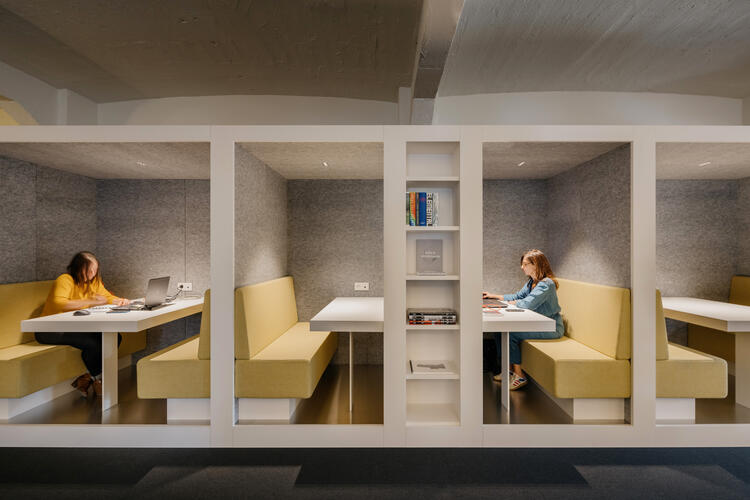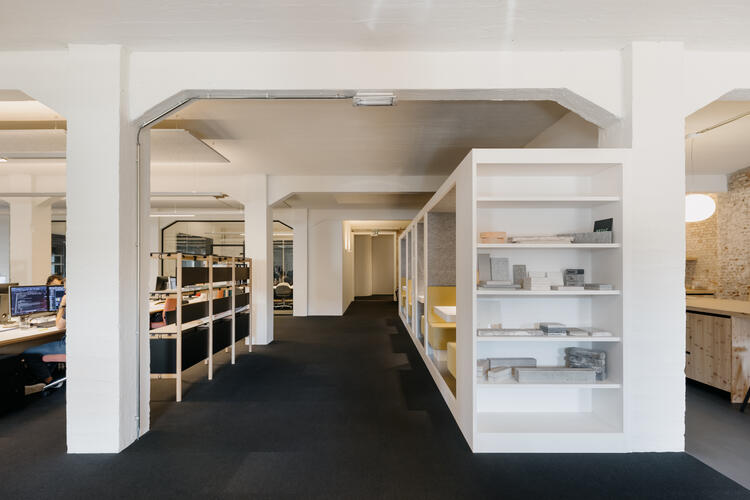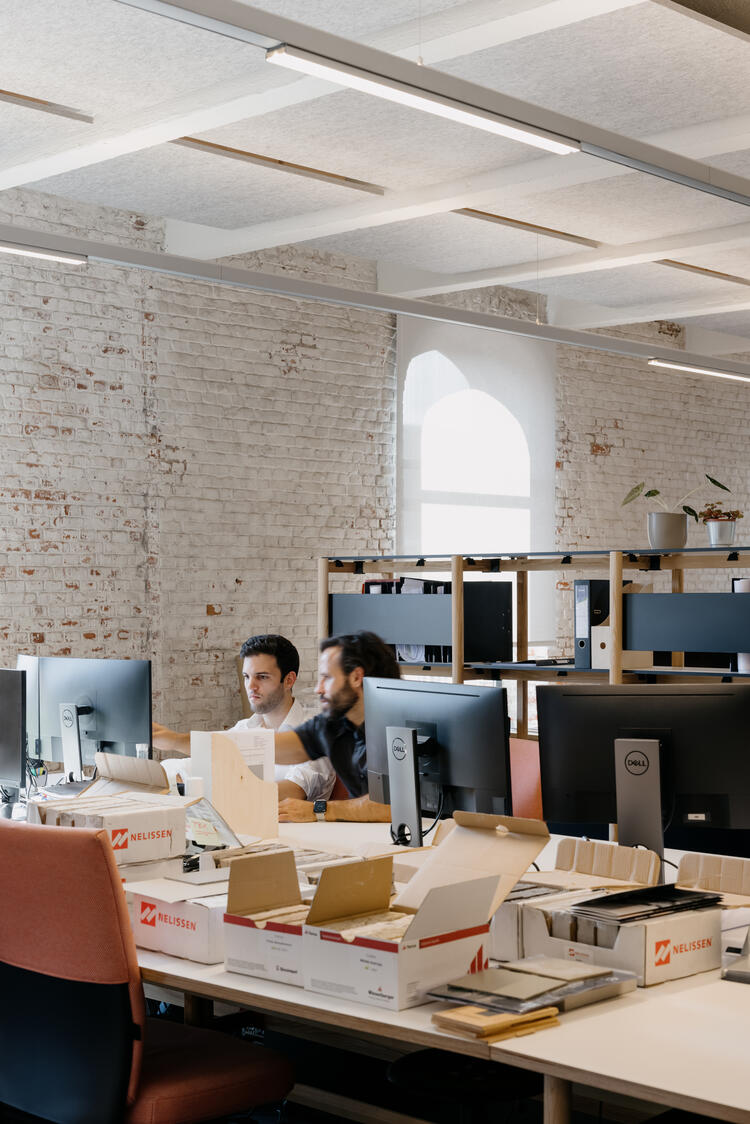POLO BXL
The Brussels branch of POLO had been growing steadily for years when the opportunity arose to relocate to the vibrant surroundings of the new Tour & Taxis campus. This state of the art regeneration project offered an opportunity to inhabit a spectacular industrial heritage site among other creatives and start-ups.
Our move to a new location provided the impetus to reevaluate the role of the office space in our practice. We were keen to give coherent material form to a work infrastructure that had grown organically over the years.
In the past decades we have witnessed how advances in technology radically transformed the way we work. This process was supercharged by the global pandemic. The design for our new offices set out to align with this evolution towards a more flexible workplace. It was to become a warm and welcoming spot for convening, inspiring and collaborating, rather than just the location for hard toiling from 9 to 5.
A home away from the home office
Now that our working life has further fragmented across time and space, the office has become a central node in a network of real and virtual worlds where we engage in work activities. For better or worse, work can now take place at home and on the train, in the coffee shop or on a park bench. For us architects this feels like a natural evolution rather than a revolution, as we have always moved between the demands of the drawing board, the meeting room and the construction site.
The office may have ceased to be the be all end all of our working life; but for us it remains the focal point around which our work activities gravitate in ever-changing constellations.
Besides being a functional, efficient place to work, the office should be where one “comes home” in an atmosphere of comfort and familiarity. It offers a stage for the informal exchanges and connections that are crucial for the creative professional and can never be replaced by teleconferences or digital meetings. More than ever, this is the unique physical space for spontaneous interaction and face-to-face communication, away from the not-so-splendid isolation of the home office.
A robust framework for flexibility
Over the last few years we have seen hot-desking, staff lockers and other trendy concepts disrupt the world of workspace design. However a flexible work attitude does not necessarily translate into such obvious design features. In our Brussels offices we devised a variety of environments to suit every employee’s changing wants and needs.
The beating heart of our office consists of islands of dedicated work stations. Located close to the windows, they benefit from an abundance of daylight and views. These are the employees’ personal domains, where work resources and tools are organised according to their own individual insights and tastes.
Near the entrance colourful booths are lined up along the wall. Here workers and visitors can withdraw for private work or phone calls. Behind them, in the dark bowels of the office, are server, printing and copying rooms.
Meeting rooms are separated from the main office space by glass walls, ensuring that a feeling of spaciousness is retained. A seating area with vintage leather sofa sits at the crossroads of circulation and user spaces, a perfect informal gathering spot. Just around the corner is the pantry with big kitchen island and large dining tables.
In the mood for work
Since the advent of the smartphone, work has escaped from the confines of the office into our private sphere. Simultaneously an air of domesticity has seeped into our workplaces. Gone are the days of architecture offices as spaces of clinical austerity, delineated by nothing but glass and steel and black furnishings.
Bring on colour and natural textures!
Against a calming backdrop of white and greys, colour accents are provided by loose furniture in subdued pastel tones. The tan leather sofa takes pride of place in the centre of the office. Built-in booth benches are a mellow tone of natural yellow.
Solid wood is used throughout to complement and soften the industrial surroundings. It is found in the ash wood structure of the proprietary desk and shelving system. The pantry area too is awash with the warm hues of different timbers used for the shared tables, pantry cupboard and kitchen island.
Most of the technical installations and cool air supply are housed in a raised floor system. This keeps the walls and ceilings untouched and avoids the tiled false ceilings typical of leased office spaces. The bare brick walls and concrete vaults of the building shell bring textures and character to the space. They remind us of the building’s history and infuse our office with a sense of place and history. This is not a generic office building but part of valuable heritage.
A customisation of the proprietary lighting system provides uplighting for the concrete vaults. This calls attention to this pleasing architectural feature while accentuating the generous headroom of the space.
The hard surfaces of ceiling, walls and glass enclosures necessitate the use of additional acoustic panels. For these we use a board made from recycled PET bottles. We source these and other furnishings from tried and trusted brands and suppliers so they can eventually be reused and expanded upon. Hence we are already considering the next iteration — our future office — in the choice of materials and installations.

















